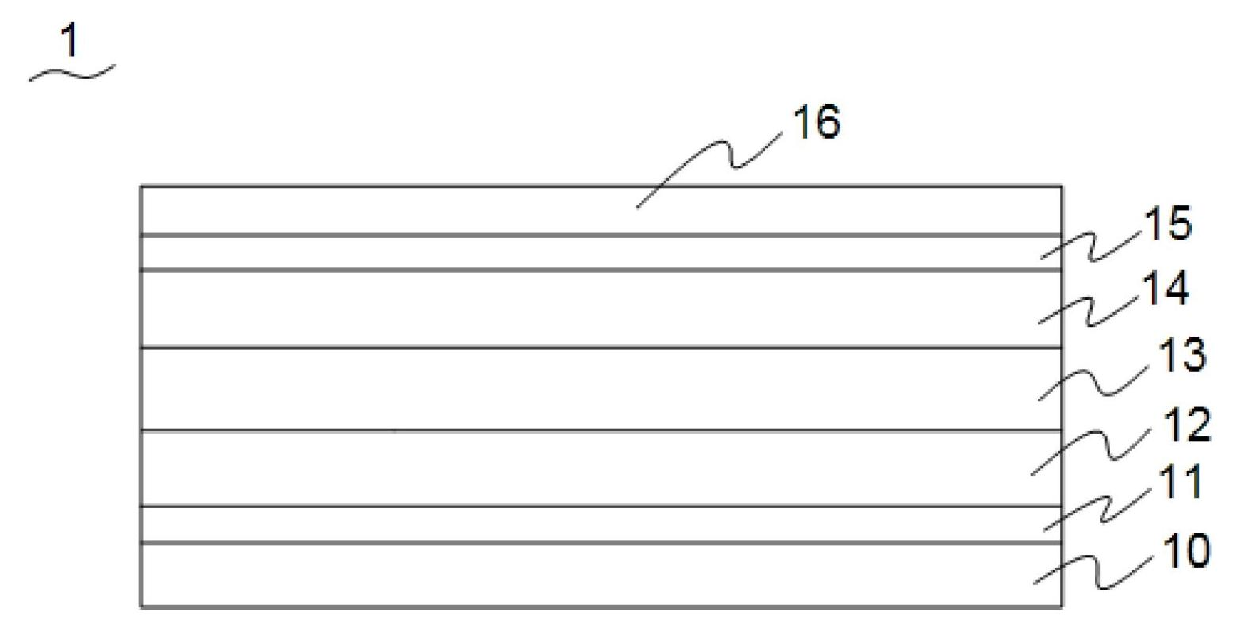Inorganic-organic heterojunction all solid solar battery
A solar cell and heterojunction technology, applied in the field of solar cells, can solve the problems of complex process, high manufacturing cost, limited element reserves, etc., and achieve the effect of reducing manufacturing cost and simplifying manufacturing.
- Summary
- Abstract
- Description
- Claims
- Application Information
AI Technical Summary
Problems solved by technology
Method used
Image
Examples
no. 1 approach
[0026] see figure 1 , figure 1 Shown is a schematic cross-sectional structure diagram of the first inorganic-organic heterojunction all-solid-state solar cell 1 of the present invention. The first inorganic-organic heterojunction all-solid-state solar cell 1 includes a substrate 10, the substrate 10 is glass, PEN, PET or plastic with certain light transmission properties; a conductive oxide layer 11, the conductive oxide layer 11 The material layer 11 is arranged on the substrate 10; the nanocrystalline semiconductor layer 12, the nanocrystalline semiconductor layer 12 forms a film structure by nanocrystalline semiconductor particles, and is arranged on the conductive oxide layer 11; photosensitizer 13 , the photosensitizer 13 is coated on the nanocrystalline semiconductor layer 12, and generates electron-hole pairs after photoexcitation; the hole transport layer 14, the hole transport layer 14 is infiltrated in the nanocrystalline semiconductor layer In the layer 12; the co...
no. 2 approach
[0032] Elements of the second embodiment that are the same as those of the first embodiment are set forth with the same numerals. The difference between the second embodiment and the first embodiment shown is that the second inorganic-organic heterojunction all-solid-state solar cell 2 of the second embodiment further adopts the necessary circuit design to realize the single-pole The plate-type solar cell structure further reduces the manufacturing cost of the second inorganic-organic heterojunction all-solid-state solar cell 2 . The details will be described in detail in conjunction with the embodiments and accompanying drawings, and the same parts will not be repeated.
[0033] see figure 2 , and see in conjunction with figure 1 , figure 2 Shown is a schematic cross-sectional structure diagram of the second inorganic-organic heterojunction all-solid-state solar cell 2 of the present invention. The second inorganic-organic heterojunction all-solid-state solar cell 2 inc...
PUM
| Property | Measurement | Unit |
|---|---|---|
| Particle size | aaaaa | aaaaa |
| Particle size | aaaaa | aaaaa |
| Work function | aaaaa | aaaaa |
Abstract
Description
Claims
Application Information
 Login to View More
Login to View More - R&D
- Intellectual Property
- Life Sciences
- Materials
- Tech Scout
- Unparalleled Data Quality
- Higher Quality Content
- 60% Fewer Hallucinations
Browse by: Latest US Patents, China's latest patents, Technical Efficacy Thesaurus, Application Domain, Technology Topic, Popular Technical Reports.
© 2025 PatSnap. All rights reserved.Legal|Privacy policy|Modern Slavery Act Transparency Statement|Sitemap|About US| Contact US: help@patsnap.com



